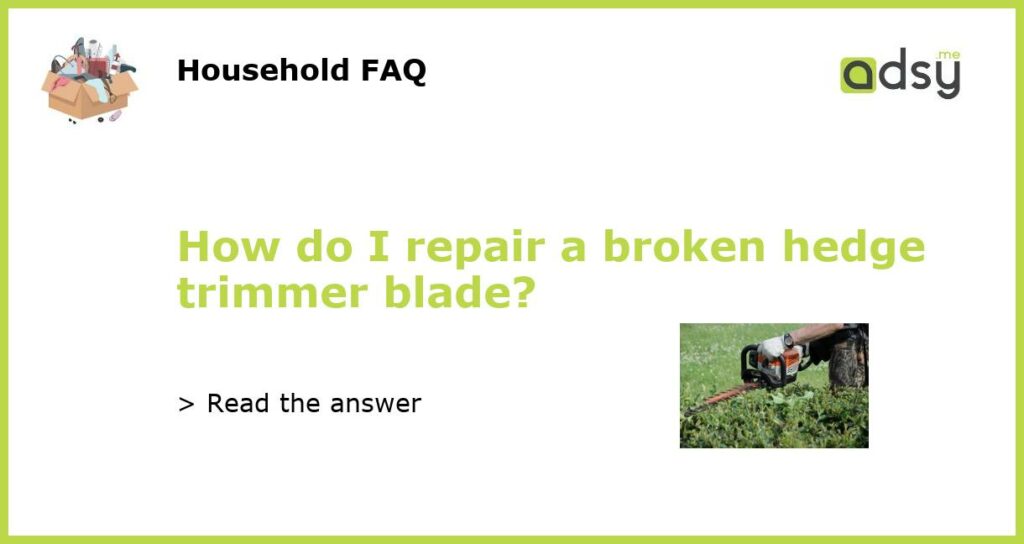Identify the issue with the blade
The first step in repairing a broken hedge trimmer blade is to identify the issue. Look for any cracks, chips, or signs of damage. If the blade is bent, it will need to be straightened before any repairs can be made. It’s also important to determine if the blade can be repaired, or if it needs to be replaced entirely. Once you’ve identified the issue, you can begin the repair process.
Tools and materials needed
To repair a broken hedge trimmer blade, you will need a variety of tools and materials. These include a large vice, a hammer or mallet, a metal file, a grinding wheel, a sharpening stone, safety glasses, and gloves. You may also need replacement parts, such as bolts or screws, depending on the extent of the damage.
Straighten the blade
If the blade is bent, the first step is to straighten it out. Carefully secure the blade in a vice, taking care not to damage it any further. Use a hammer or mallet to gently tap the blade back into its original shape. Be sure to check the blade for any cracks or other signs of damage once it’s been straightened.
Repair or replace damaged parts
If there are any cracks or chips in the blade, they will need to be repaired. Use a metal file or grinding wheel to smooth out any jagged edges or rough spots. If a bolt or screw is damaged, it may need to be replaced entirely. Be sure to consult the manufacturer’s instructions or a professional if you’re unsure how to replace any damaged parts.
Sharpen the blade
Once any necessary repairs have been made, it’s time to sharpen the blade. Use a sharpening stone or grinding wheel to hone the blade to a razor-sharp edge. Be sure to wear safety glasses and gloves during this process, as the blade will be extremely sharp when you’re finished.
With these steps, you should be able to successfully repair a broken hedge trimmer blade. However, it’s always a good idea to consult a professional if you’re unsure about any aspect of the repair process. Safety should always be your top priority when working with sharp tools and equipment.






